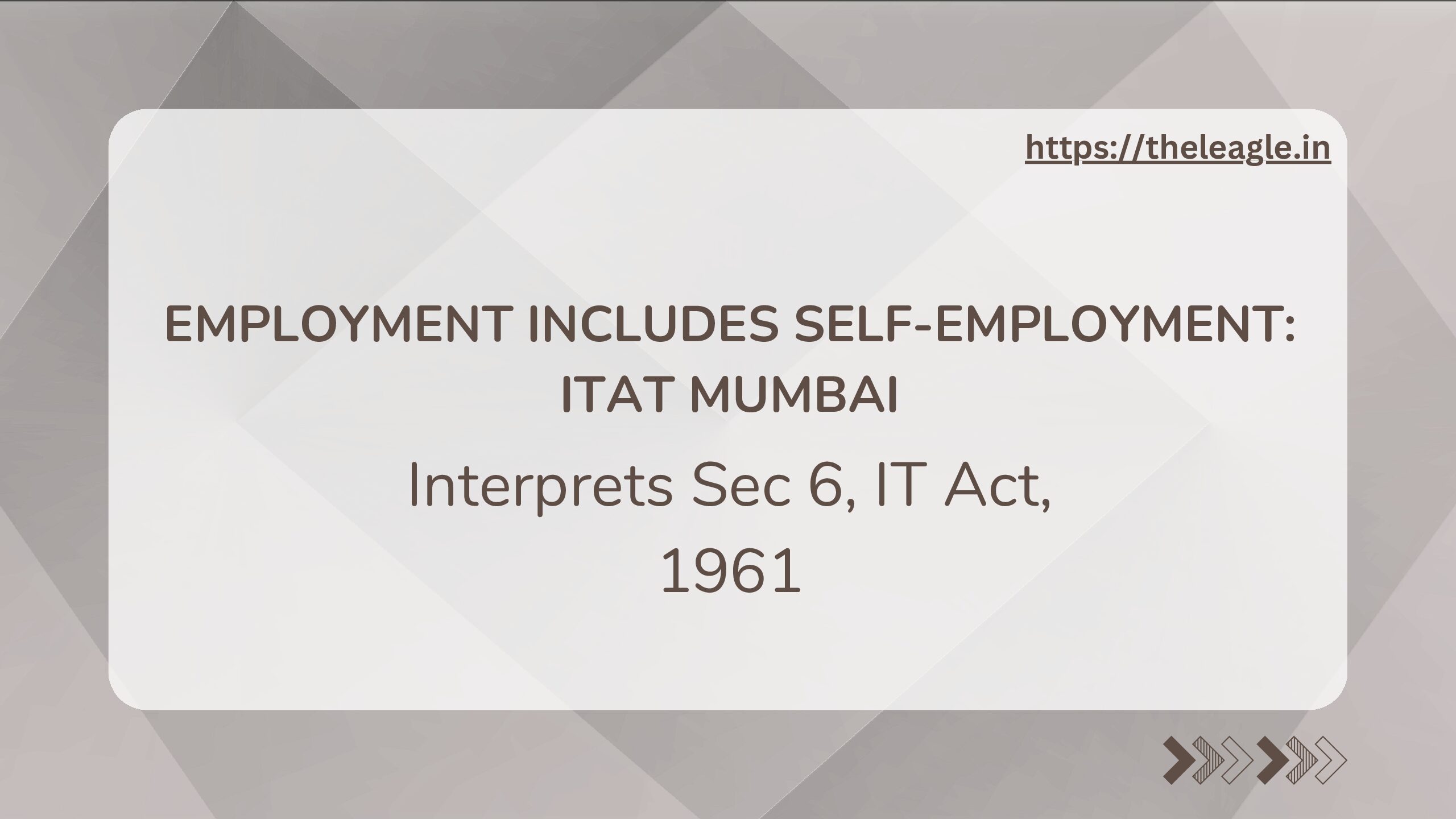ITAT, Mumbai recently[1] interpreted the term ‘employment’ used in Explanation 1(a), Section 6, IT Act, 1961 and held that the term includes within its remit self-employment such as business or profession. ITAT relied on CBDT’s Circular and the Kerala High Court’s decision on a similar issue which also held that the term employment includes self-employment.
Facts
In the impugned case, assessee filed his return on 28.01.2020 and claimed his status as ‘non-resident’ for the assessment year and did not offer his global income for taxation. The Assessing Officer (‘AO’) observed that the assessee had left for Mauritius as an investor on a business visa and not for the purpose of employment and could not avail the benefit of Explanation 1(a).
Section 6(1) inter alia states that an individual is resident in India if he is in India for 365 days in the four years preceding the relevant previous year and is in India for a period or periods amounting to 60 days in the previous year. Explanation 1(a) to Section 6(1) states that an individual being a citizen of India, who leaves India in any previous year ‘for the purpose of employment outside India’, 60 days shall be read as 182 days. In simple terms, the Explanation alters the residence condition of 365+60 days to 365+182 days for an Indian citizen who leaves India for purpose of employment. A person who leaves abroad for purpose of employment has can spend more time in India before being considered a resident.
In the impugned case, the AO was arguing that the assessee’s case was covered within the general rule of 365+60 days since he did not leave for employment outside India but as an investor on a business visa. While the asssessee argued that his case was covered by the 365+182 days condition since he left for Mauritius as a consultant to a company. Since the assessee had spent 176 days in India, determining the applicable condition was crucial to answering the residential status of the assessee. The ITAT had to determine if an assessee leaves India not for employment, but self-employment, can it be granted the benefit of the relaxed condition of 365+182 days.
Decision
ITAT primarily relied on the CBDT Circular and the Kerala High Court’s decision to conclude that the term employment cannot be given technical meaning and employment would include going aboard for any avocation including self-employment such as business or profession. The qualifier is that the term employment did not include visits abroad for tourism purposes or medical treatment or the like. ITAT and the Kerala High Court’s decision align closely with CBDT’s explanation as to why the relaxation in the residency test was introduced. As per CBDT’s Circular the residency test was modified to avoid hardship to Indian citizens who were employed or ‘engaged in other avocations outside India’. (para 7.3) It is apparent that relaxation in the residency test introduced via Explanation 1(a) was not limited to only employed persons but also any Indian citizen carrying out any avocation outside India.
Conclusion
ITAT Mumbai’s decision in the impugned case is the correct interpretation of the law and arrives at a fair conclusion ensuring parity between people who leave India for the purposes of employment and people who leave India for business purposes. Hopefully, the AO in the impugned case and other similar cases will adhere to this interpretation of the law and scrutinize assessments accordingly.
[1] Asst Commissioner of Income Tax v Shri Nishant Kanodia TS-11-ITAT-2024 Mum.
